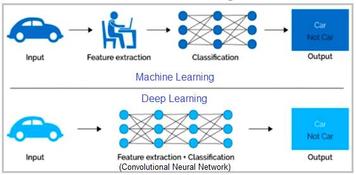
DC vs AC Load Line: Key Differences Explained
Understand the differences between DC and AC load lines in electronic circuit analysis, focusing on their use in transistor amplifier design.
Showing 20 posts (Page 35 of 162)
Advertisement

Understand the differences between DC and AC load lines in electronic circuit analysis, focusing on their use in transistor amplifier design.

Explore the differences between DC and RF sputtering techniques, focusing on working principles, material suitability, and applications in thin-film deposition.

Explore the pros and cons of DC-DC converters, including voltage boosting, noise sensitivity, and cost considerations. Learn about different types and their applications.
Explore the differences between DDR5 and LPDDR5 memory, focusing on power consumption, performance, and target applications. Understand which type is best for your needs.

Explore direct digital synthesis (DDS) principles, advantages, and architecture. Learn how DDS generates tunable RF signals using a fixed clock, crucial for modern wireless communication.

Explore the fundamentals of DDS protocol architecture, focusing on its brokerless approach within the context of the Internet of Things (IoT).

Explore the benefits and drawbacks of the DDS (Data Distribution Service) protocol for IoT, covering architecture, QoS, scalability, and limitations.

Explore the fundamental differences between Direct Digital Synthesizers (DDS) and Phase-Locked Loops (PLL) in electronic signal generation and frequency synthesis.

Explore the fundamentals of Dead Reckoning (DR) navigation systems, including how they function using gyroscopes and distance traveled to estimate position without satellite signals.
Explore the distinctions between DECT and PHS cordless phone technologies, including frequencies, access methods, and cell sizes.
Explore the differences between DECT and DECT ULE in terms of power, range, data rates, security, and applications. Understand which technology is suitable for your needs.

Explore the pros and cons of deep learning, a subset of machine learning, including its benefits, drawbacks, and applications.

Explore the benefits and drawbacks of Delta Modulation (DM), including its simplicity, redundancy removal, and limitations like slope overload and high bit rate.

Learn the basics of DeMorgan's Theorem with rules and examples for simplifying logical expressions in Boolean algebra. Includes a handy mnemonic.

Explore the key differences between Depletion and Enhancement MOSFETs, including conduction at 0V, cut-off voltage, leakage currents, and logic operations. Learn about their construction, characteristics, and applications.
Learn the core differences between DES and AES encryption algorithms, including key length and security considerations for data communication.
Explore DeviceNet's applications, advantages, and disadvantages. Learn how this CAN-based protocol simplifies communication between industrial automation devices.
Explore the advantages and disadvantages of DevOps, including improved collaboration, faster deployment, and potential challenges like cultural shifts and tool overload.

Explore the key differences between Dielectric Filled Waveguides (DFW) and Substrate Integrated Waveguides (SIW), including construction and mode of operation.

DHCP uses ports 67 (server) and 68 (client) for automatic IP address assignment. Learn how DHCP simplifies network management.
Advertisement